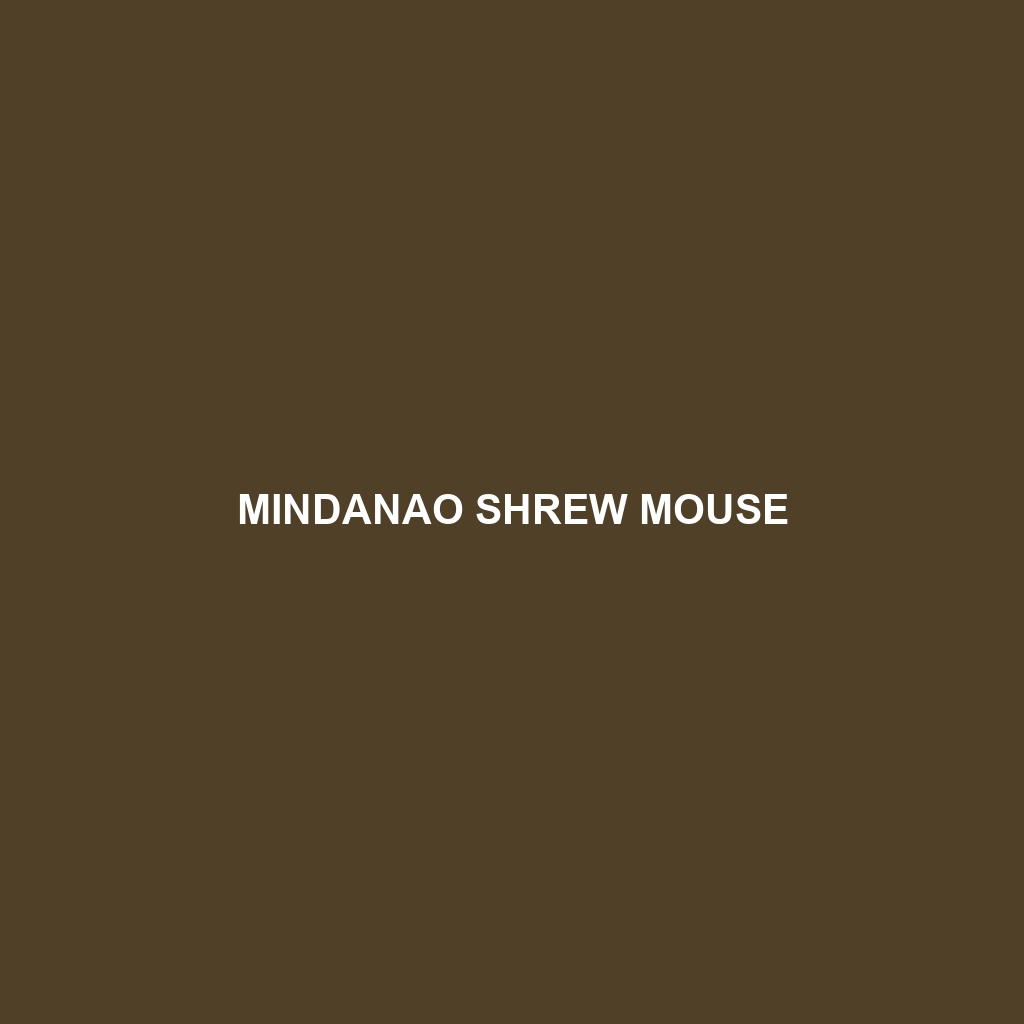Mindanao Shrew Mouse
Common Name: Mindanao Shrew Mouse
Scientific Name: Entomocomys mindanensis
Habitat: The Mindanao Shrew Mouse is primarily found in the tropical forests of the Mindanao Island in the Philippines. This species thrives in montane and lowland forest environments, typically favoring areas with dense underbrush and abundant leaf litter. They inhabit elevations ranging from 1,000 to 2,000 meters, showcasing a preference for moist, shaded habitats that provide cover from predators.
Physical Characteristics: The Mindanao Shrew Mouse is a small-sized rodent, measuring about 12 to 18 cm in total length, including a tail that constitutes nearly half of its body size. It features a dense, soft fur that is typically brown or grayish, which allows it to blend seamlessly into its natural surroundings. Distinctive characteristics include a pointed snout and large, sensitive whiskers, aiding in navigation and foraging in the dark, dense habitats.
Behavior: This species is primarily nocturnal, engaging in most of its activities at night. The Mindanao Shrew Mouse is known for its agility and adept climbing abilities, often found foraging for food in trees and shrubs. It exhibits solitary behavior, but some individuals have been observed sharing nesting sites. Their communication involves a range of vocalizations and scent-marking to establish territory.
Diet: The Mindanao Shrew Mouse is omnivorous, feeding on insects, fruits, seeds, and fungi. Their diet primarily comprises small invertebrates, which they hunt during their nocturnal foraging expeditions. The ability to consume a varied diet allows them to adapt to seasonal changes in food availability, making them resilient in their natural habitat.
Reproduction: Breeding in the Mindanao Shrew Mouse typically occurs throughout the year, with peak activity often noted during the wetter months. Females usually give birth to a litter ranging from two to four offspring after a gestation period of about 30 days. The young are altricial, requiring significant parental care, and they begin to forage independently after about three weeks.
Conservation Status: The Mindanao Shrew Mouse is currently classified as vulnerable due to habitat loss from deforestation and agricultural expansion. Conservation efforts are needed to protect its remaining woodland habitats, ensuring the survival of this unique species.
Interesting Facts: One fascinating aspect of the Mindanao Shrew Mouse is its ability to survive in elevated habitats, where few predators can reach them. Additionally, they have a keen sense of smell, which allows them to locate food sources and communicate with others of their species effectively.
Role in Ecosystem: The Mindanao Shrew Mouse plays a vital role in its ecosystem as both a seed disperser and predator of insects. By foraging and consuming various plant materials, they help maintain plant diversity within their habitat. Moreover, as prey for larger predators, they significantly contribute to the food web, showcasing their importance in maintaining ecological balance.
